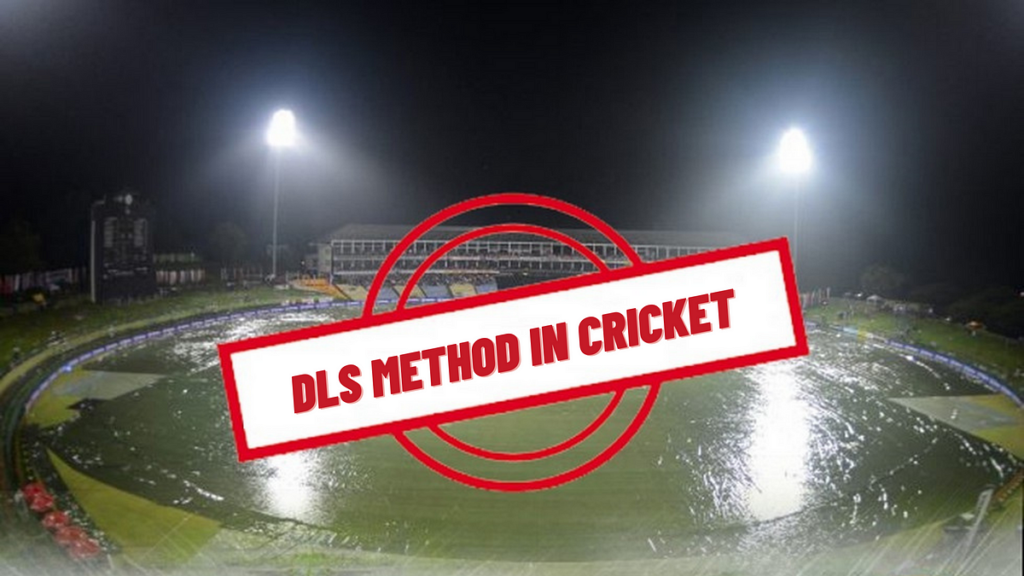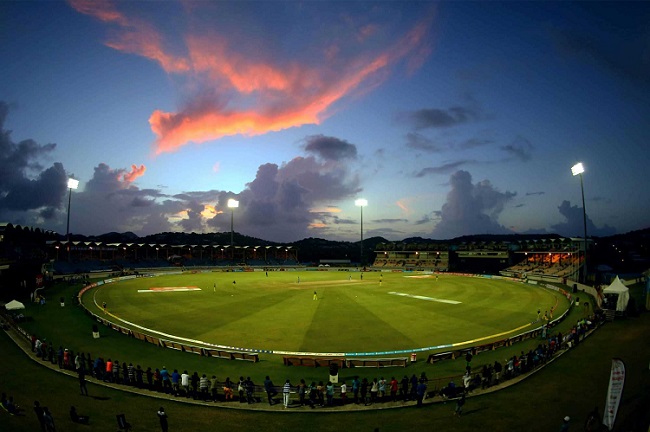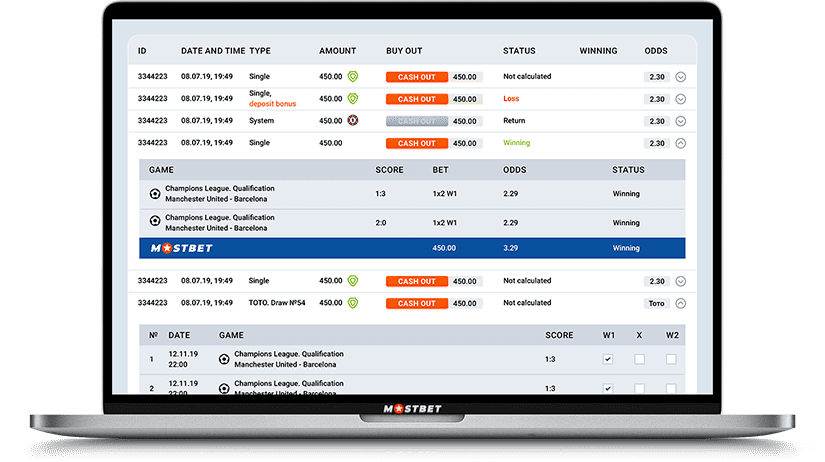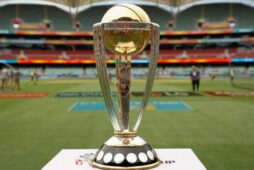What is Duckworth-Lewis method in cricket

In the game of cricket, the weather can sometimes play spoilsport, causing interruptions or even cancellations due to rain. To ensure fairness and maintain the excitement of the sport, the Duckworth-Lewis Method (DLS) was introduced. Developed by Frank Duckworth and Tony Lewis, this mathematical formula revolutionized the way rain-affected matches are decided. In this article, we will delve into the intricacies of the Duckworth-Lewis Method, exploring its calculations, rules, and revised targets for rain-affected games in Nepal, brought to you by Mostbet, a leading online casino and sports betting platform.
Evolution and Purpose of the Duckworth-Lewis Method
The Duckworth-Lewis Method was first implemented in international cricket in 1997, aiming to provide a fair system for determining revised targets in limited-overs matches affected by rain. The method considers various factors such as the number of overs lost, the number of wickets fallen, and the scoring rate of the team batting first. By using these parameters, the DLS system strives to establish an equitable target for the team batting second, ensuring an exciting contest regardless of weather interruptions. Stay tuned to Mostbet (https://mostbet-info-np.com/en/) to witness the thrilling outcomes of rain-affected matches under the Duckworth-Lewis Method.
The Calculation Process
The Duckworth-Lewis Method utilizes a complex mathematical formula to determine revised targets based on the number of overs lost due to rain. The calculation process involves two main steps: the initial resource percentage calculation and the target score calculation.
The initial resource percentage is calculated by considering the number of overs lost and the current scoring rate of the team batting first. It reflects the proportion of resources available to the team batting second compared to the team batting first.
Using the initial resource percentage, the target score is then determined based on the par score, which represents the number of runs the team batting first would have been expected to score had there been no interruptions. The target score is adjusted based on the number of overs available to the team batting second, ensuring a fair chase.
Stay up to date with the latest revised targets and calculations under the Duckworth-Lewis Method by visiting Mostbet, your trusted destination for online casino and sports betting in Nepal.
Application of the Duckworth-Lewis Method

To illustrate the application of the Duckworth-Lewis Method, let's consider a hypothetical scenario where Team A has scored 250 runs for 4 wickets in 40 overs before rain interrupts play. Team B is set a revised target after losing 5 overs due to rain.
The Duckworth-Lewis Method, using its calculations, determines that Team B has 80% of the resources available compared to Team A. Therefore, the revised target for Team B would be 200 runs (80% of 250). However, since Team B has lost 5 overs, the target is further adjusted based on the resources remaining.
If Team B has 30 overs remaining after the rain interruption, the target would be reduced proportionally. For example, if they have 30 overs remaining out of the original 50, the target would be recalculated as 120 runs (60% of 200).
Keep track of the revised targets and follow the nail-biting action of rain-affected matches by placing your bets on Mostbet, the premier online casino and sports betting platform in Nepal.
Criticisms and Revisions
Over the years, the Duckworth-Lewis Method has faced some criticism regarding its complexity and potential for unfairness. As a result, the International Cricket Council (ICC) has made revisions to the original formula to address these concerns.
The most recent revision, known as the Duckworth-Lewis-Stern (DLS) method, was introduced in 2014. This revised method considers the resource percentage at the start of each over, making it fairer for the chasing team in rain-affected matches.
The ICC has also introduced additional safeguards to minimize the impact of revised targets, such as ensuring a minimum number of overs for a result and applying a maximum target adjustment limit. These measures aim to strike a balance between maintaining fairness and preserving the integrity of the game.
Stay informed about the latest updates and revisions to the Duckworth-Lewis Method through Mostbet, the top online casino and sports betting site in Nepal.
Conclusion
The Duckworth-Lewis Method has become an integral part of cricket, ensuring fair outcomes in rain-affected matches. Its calculations and revised targets play a crucial role in maintaining the excitement and competitiveness of the sport. Stay engaged with Mostbet, the leading online casino and sports betting platform, to witness the thrilling twists and turns of rain-affected cricket matches in Nepal.
FAQ
FAQ
Can the Duckworth-Lewis Method be applied in all formats of cricket?
No, the Duckworth-Lewis Method is primarily used in limited-overs cricket formats, such as One Day Internationals (ODIs) and Twenty20 (T20) matches. It is not typically applied in Test matches, as the longer duration allows for more flexibility in making up lost time.
How does the Duckworth-Lewis Method handle interruptions due to factors other than rain, such as bad light?
The Duckworth-Lewis Method is primarily designed to address rain interruptions. However, if a match is affected by bad light or other factors, the match officials may still use the method to calculate revised targets based on the resources lost. The specific application may vary depending on the playing conditions and the discretion of the officials.
- Evolution and Purpose of the Duckworth-Lewis Method
- The Calculation Process
- Application of the Duckworth-Lewis Method
- Criticisms and Revisions
- Conclusion
- FAQ
-
 गैर-डिपोजिट बोनस
गैर-डिपोजिट बोनसगैर-डिपोजिट बोनस
तपाईको नो डिपोजिट बोनस प्राप्त गर्न अहिले नै Mostbet क्यासिनोमा दर्ता गर्नुहोस्
मोस्टबेट वेबसाइटमा दर्ता गरेर एभिएटरमा नि:शुल्क स्पिन वा नि:शुल्क बेट्स पाउनुहोस्। सबै गेमरहरूले नो-डिपोजिट बोनसहरू प्राप्त गर्छन्!
-
प्राथमिक वसन्त क्रिकेट कार्यक्रमलाई नछुटाउनुहोस्! भाग्य को पाङ्ग्रा! दैनिक खेल्नुहोस्, कार्यहरू पूरा गर्नुहोस्, बोनस पाउनुहोस् र 100 बजाज प्लाटिना 110 बाइकहरू जित्नको लागि अन्तिम चिट्ठामा भाग लिनुहोस्।
-
 ST MOSTBET सँग प्याट्रिकको दिन
ST MOSTBET सँग प्याट्रिकको दिनST MOSTBET सँग प्याट्रिकको दिन
सेन्ट प्याट्रिकको दिनमा मोस्टबेटको साथ क्यासिनोमा जित्नुहोस्!
मोस्टबेट क्यासिनोको साथ, सेन्ट प्याट्रिक दिवस ग्रीन फेस्टिभलसँग मनाउनुहोस् र भाग्यशाली महसुस गर्न लेप्रेचानहरूसँग ठूलो जित्नुहोस्!
-
 जोखिम मुक्त शर्त
जोखिम मुक्त शर्तजोखिम मुक्त शर्त
मोस्टबेटबाट जोखिम-मुक्त शर्त प्रस्ताव: तपाईंको पहिलो शर्त फिर्ता पाउनुहोस्
नि:शुल्क प्रारम्भिक खेलकुद शर्तको लागि, आज मोस्टबेटको लागि साइन अप गर्नुहोस्। जोखिम मुक्त शर्त: यदि तपाईंले हराउनुभयो भने, हामी तपाईंको पैसा फिर्ता गर्नेछौं। यो सीमित समयको अफरको फाइदा लिनुहोस्।
-
 MOSTBET लोयल्टी कार्यक्रम
MOSTBET लोयल्टी कार्यक्रमMOSTBET लोयल्टी कार्यक्रम
असाधारण पुरस्कारहरू प्राप्त गर्न Mostbet वफादारी कार्यक्रमको साथ अंकहरू प्राप्त गर्नुहोस्
Mostbet मा लोयल्टी कार्यक्रमले तपाईंलाई प्रत्येक दांवको लागि पुरस्कार कमाउन दिन्छ। छुट र अद्वितीय लाभहरू पहुँच गर्न अंकहरू कमाउनुहोस्। कमाई सुरु गर्न आज साइन अप गर्नुहोस्!
-
 आफ्ना साथीहरूलाई बोलाउनुहोस् Mostbet
आफ्ना साथीहरूलाई बोलाउनुहोस् Mostbetआफ्ना साथीहरूलाई बोलाउनुहोस् Mostbet
तपाईं र तपाईंका साथीहरू दुवैका लागि बोनस प्राप्त गर्न साथीहरूलाई Mostbet मा ल्याउनुहोस्!
जब तपाइँ सफलतापूर्वक साथीहरूलाई Mostbet मा आमन्त्रित गर्नुहुन्छ, तपाइँ प्रोत्साहन प्राप्त गर्न सक्नुहुन्छ। तपाइँका साथीहरूलाई स्वागत बोनस पनि दिइन्छ! साइन अप गरेर आज निमन्त्रणा सुरु गर्नुहोस्!
-
 सञ्चयकर्ता का लागि बोनस
सञ्चयकर्ता का लागि बोनससञ्चयकर्ता का लागि बोनस
मोस्टबेट एक्सप्रेस-बूस्टरको साथमा तपाईंको एक्युमुलेटर बोनस बढ्नेछ
मोस्टबेट एक्सप्रेस-बूस्टरको साथ, तपाइँको सञ्चयकर्ता बेट्सबाट फिर्तालाई अधिकतम बनाउनुहोस्। ठुलो जित्नको लागि आफ्नो एक्युमुलेटर बेट्समा बोनस पाउनुहोस्।
-
 क्यासिनो लोयल्टी कार्यक्रम
क्यासिनो लोयल्टी कार्यक्रमक्यासिनो लोयल्टी कार्यक्रम
एक वफादारी कार्यक्रम संग क्यासिनो: आफ्नो जीत कसरी वृद्धि गर्ने!
विशेष पुरस्कार, बोनस र विशेषाधिकारहरूबाट फाइदा लिन Mostbet क्यासिनो लोयल्टी कार्यक्रममा सामेल हुनुहोस्। तुरुन्त अंक प्राप्त गर्नुहोस्!
-
 प्रोमो क्यासिनोमा क्यासब्याक
प्रोमो क्यासिनोमा क्यासब्याकप्रोमो क्यासिनोमा क्यासब्याक
मोस्टबेट क्यासिनोमा खेल्नको लागि, सिधै क्यासिनोमा आफ्नो क्यासब्याक कमाउनुहोस्
तपाईंले मोस्टबेट क्यासिनोमा साइन अप गर्दा आफ्नो घाटाको भुक्तानी पाउनुहोस्। जब तपाइँ धेरै खेल्नुहुन्छ, तपाइँको जीत बढ्छ। यो मौका आफ्नो औंलाहरु मार्फत चिप्लन नदिनुहोस्!
-
 पहिलो जम्मामा बोनस
पहिलो जम्मामा बोनसपहिलो जम्मामा बोनस
तपाईंको प्रारम्भिक जम्मामा, सट्टेबाजीको लागि 125% अतिरिक्त पैसाको बोनस प्राप्त गर्नुहोस्।.
तपाईंले आफ्नो पहिलो जम्मा गर्दा 125% सम्मको बोनस प्राप्त गर्न Mostbet को स्वागत बोनसको फाइदा लिनुहोस्! आफ्नो जीत बढाउन यो मौका नभुल्नुहोस्!
-
 MOSTBET को साथमा जन्मदिन
MOSTBET को साथमा जन्मदिनMOSTBET को साथमा जन्मदिन
MostBet सँग आफ्नो जन्मदिन मनाउनुहोस् र उपहारहरू प्राप्त गर्नुहोस्!
तपाईंको विशेष दिनमा Mostbet सँग रमाउनुहोस्! तपाईंको जन्मदिनमा, हामीसँग सामेल हुनुहोस् र विशेष फाइदाहरू र आश्चर्यहरूको फाइदा लिनुहोस्। अहिले नै सामेल भएर यसलाई सम्झने दिन बनाउनुहोस्।
-
विशाल पुरस्कार जित्नको लागि Mostbet मा Betgames Jackpot मा सामेल हुनुहोस्! ठूलो जित्ने मौकाको लागि आज विभिन्न खेलहरूमा आफ्नो भाग्य प्रयास गर्नुहोस्। हराउनबाट बच्नुहोस्!
-
 BET बीमा
BET बीमाBET बीमा
Mostbet Bet Insurance: Protect Your Bets Now!मोस्टबेट बेट इन्स्योरेन्स: अब आफ्नो बेट सुरक्षित गर्नुहोस्!
Mostbet मा शर्त बीमा प्रकार्यले तपाइँलाई बाजी गुमाउनबाट जोगाउँछ। तपाईंका दामहरू बीमा गरिएका छन् भनी थाह पाएर तपाईं अझ सहज महसुस गर्नुहुनेछ।
-
Mostbet Bet Buyback ले तपाइँको पैसा खेल समाप्त हुनु अघि फिर्ता गर्नेछ। आफ्नो बेट्सको नियन्त्रण पुन: प्राप्त गर्न, कुनै पनि समयमा भुक्तानी गर्नुहोस्!
-
Every week, win spectacular prizes and tremendous bonuses with Mostbet's Triumphant Friday. Increase your profit right away!
-
 ST. PATRICK’S DAY WITH MOSTBET
ST. PATRICK’S DAY WITH MOSTBETST. PATRICK’S DAY WITH MOSTBET
Win in the casino with Mostbet on Saint Patrick's Day!
With Mostbet Casino, celebrate St. Patrick's Day with the Green Festival and win big with leprechauns to feel lucky!
-
For a free initial sports bet, sign up for Mostbet today. RISK FREE BET: If you lose, we'll refund your money. Take advantage of this limited-time offer.
-
 MOSTBET LOYALTY PROGRAMME
MOSTBET LOYALTY PROGRAMMEMOSTBET LOYALTY PROGRAMME
Get Points with The Mostbet Loyalty Program to Receive Extraordinary Rewards
The loyalty programme at Mostbet lets you earn rewards for each wager. Earn points to access rebates and unique perks. Sign up today to begin earning!
-
 INVITE YOUR FRIENDS
INVITE YOUR FRIENDSINVITE YOUR FRIENDS
Bring Friends to Mostbet to Get Bonuses for Both You and Your Friends!
When you successfully invite friends to Mostbet, you can receive incentives. A welcome bonus is also given to your friends! Start inviting today by signing up!
-
 BONUS FOR ACCUMULATOR
BONUS FOR ACCUMULATORBONUS FOR ACCUMULATOR
Your accumulator bonus will increase with Mostbet Express-Booster
With Mostbet Express-Booster, maximise the returns from your accumulator bets. Get a bonus on your accumulator bets to win big.
-
 Casino loyalty program
Casino loyalty programCasino loyalty program
Casinos with a Loyalty Program: How to Increase Your Winnings!
Join the Mostbet Casino Loyalty Program to benefit from exclusive rewards, bonuses, and privileges. Get points immediately!
-
 CASHBACK AT THE CASINO
CASHBACK AT THE CASINOCASHBACK AT THE CASINO
To play at Mostbet Casino, get your cashback at the casino right away
Get a payback for your losses when you sign up at Mostbet Casino. When you play more, your winnings grow. Don't let this chance slip through your fingers!
-
 BONUS ON FIRST DEPOSIT
BONUS ON FIRST DEPOSITBONUS ON FIRST DEPOSIT
Get a bonus up to 125% more money for wagers on your initial deposit.
When you make your first deposit, take advantage of Mostbet's welcome bonus and receive a bonus of up to 125%! Don't pass up this opportunity to raise your winnings!
-
 BIRTHDAY WITH MOSTBET
BIRTHDAY WITH MOSTBETBIRTHDAY WITH MOSTBET
Celebrate your birthday with MostBet and receive presents!
Rejoice with Mostbet on your special day! On your birthday, join us and take advantage of exclusive benefits and surprises. Make it a day to remember by joining right now.
-
Join Betgames Jackpot at Mostbet to win enormous rewards! Try your luck in a variety of games today for a chance to win big. Avoid missing out!
-
The bet insurance function at Mostbet protects you from losing bets. You'll feel more at ease knowing that your wagers are insured.
-
Before the game is over, Mostbet Bet Buyback will refund your money. Make a pay out at any time to take control of your bets!
















